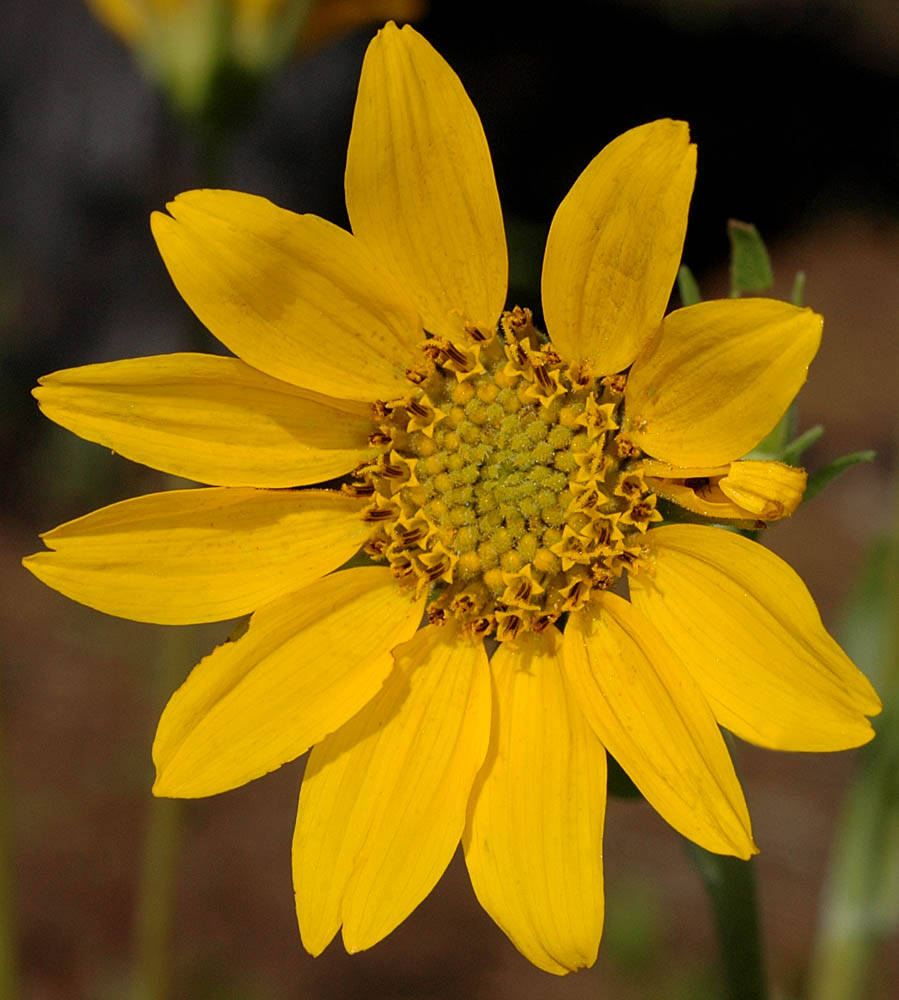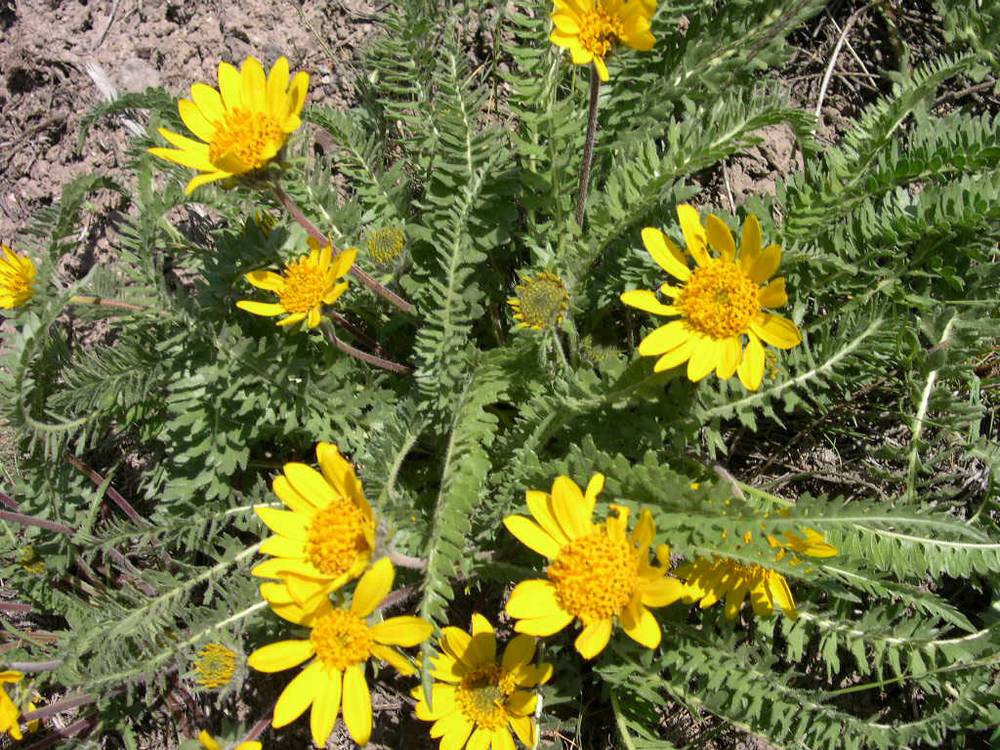Balsamorhiza
Balsamorhiza hispidula
balsamroot
hispid balsamroot
erect, scapose, unbranched.
8–25 cm, villous-hirsute; from single taproot.
mainly basal; simple or pinnately compound, lanceolate to ovate;
cauline opposite, sometimes 1 additional pair of reduced cauline leaves alternate.
ovate-lanceolate, 1-pinnately divided with pinnae again lobed, often with only a few lobes at tips or divided;
margins entire, ciliate;
surfaces hispid;
basal leaves in 1–few rosettes;
blades 5–18 × 3–7.5 cm;
pinnae 2–8 mm wide;
petioles 2–9 cm;
cauline leaves in one opposite pair;
blades 1.5–5 × 0.4–2 cm;
petioles 1.5–4 cm.
with 1 main head, occasionally with up to 6 axillary heads per stem.
with 1 terminal head.
broadly campanulate to hemispheric.
10–15 × 17–22 mm.
flat to convex, paleate.
pistillate;
corollas yellow or rarely pink to red.
deciduous, 10–13, yellow;
rays 20–25 × 5–10 mm.
bisexual;
corollas yellow, 5-lobed.
6–7 mm.
in 2–4 series; outer equaling or surpassing inner.
linear to lanceolate, 14–17 × 2–3 mm, with acuminate or caudate tips, ciliate, villous-hirsute.
4-sided; black, glabrous or strigillose;
pappi 0.
6–7 mm, glabrous.
radiate.
lanceolate; acute, folded around fruits.
7–8 mm.
Balsamorhiza
Balsamorhiza hispidula
Western Canada and United States. 12 species; 10 species treated in Flora.
Balsamorhiza is most closely related to Wyethia, from which it is distinguished by being scapose. Balsamorhiza is divided into two sections, both of which occur in Oregon. Section Artorhiza has cordate or sagittate, simple leaves; a taproot bearing multiple crowns; alternate stem leaves above the pair of opposite leaves; and often multiple heads per stem. Section Balsamorhiza has generally pinnately divided leaves (often simple in B. serrata); taproots bearing one or at most two crowns; one pair of opposite stem leaves; and a solitary head per stem. All species of Oregon Balsamorhiza have a chromosome number of n=19 and hybridize when they come together except for the polyploid B. macrophylla. Intersectional hybridization merely produces hybrid swarms, while intrasectional hybridization tends to produce widespread clines, leading to taxonomic confusion. Hybrid swarms are easily distinguished in the field by the wide variation in leaf division and pubescence within a given population. In the herbarium, when only one plant per population is present, hybrids are best distinguished by possessing leaves that are not as deeply divided as would be expected for the most similar-looking member of section Balsamorhiza, or by plants with pinnately divided leaves having either multiple heads per stem or alternate, in addition to opposite, stem leaves. Widths of heads are those of pressed specimens. Widths of pinnae are the width of full-sized pinnae from the middle of a fully developed leaf at their widest point (not including any lobes that may be present).
Dry, often rocky, open areas. Flowering Apr–Jun. 800–1700 m. BR, BW, Owy. ID, NV; northeast to MT, east top WY, southeast to AZ. Native.
While B. hispidula is quite distinct from B. hookeri throughout most of its range, it intergrades completely with B. hookeri in Oregon. Although the two species have been kept separate in this treatment, most Oregon specimens of B. hispidula show some evidence of gene flow from B. hookeri. Balsamorhiza hispidula also hybridizes with B. sagittata. The specific epithet refers to the pubescence of the plants.
Abigail (Abby) Moore




